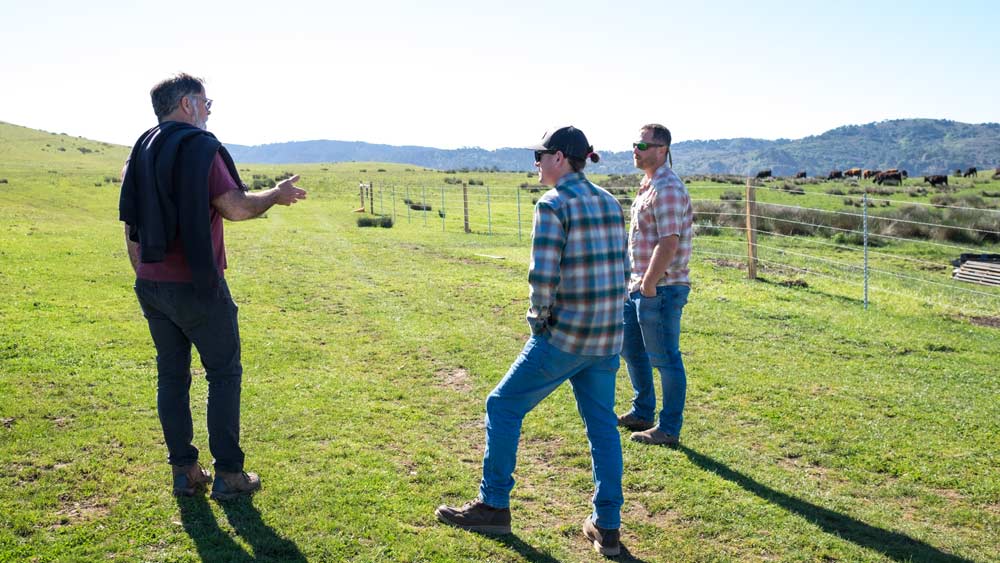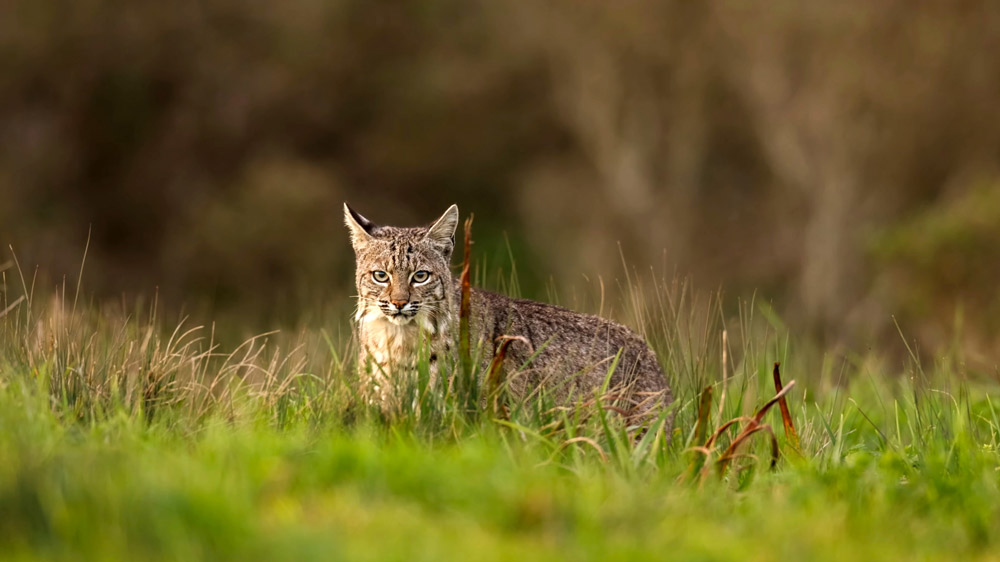Why We Monitor Every MALT Conservation Easement Every Year

By Tristan Brenner,
Stewardship Program Manager
May 29, 2024
On a recent annual monitoring visit to a ranch with an easement outside of Novato, MALT staff got to see first-hand the results of a pasture improvement project (funded in part by MALT). As a result of the project, tall native bunch grasses and healthy forage species covered the uplands and ridgelines where the landowner had spread seed with new and innovative equipment (both a no-till drill and drone). This easement check-in not only gave us a chance to share in this success and assess the conditions across the ranch, but it also gave us an opportunity to deepen connections and better understand the larger agricultural landscape.
The MALT Stewardship team started the 2024 conservation easement monitoring season amidst spectacular hail storms and stunning wildflower displays. Our first two visits out of a planned 93 brought us to opposite ends of the county, just outside Valley Ford and Bolinas. The sweeping coastal prairie, saturated from consistent winter storms, was teeming with Tolmie’s star-tulips and western dog violet. The same rains and cool temps that had delayed the start of growing season for row croppers in Bolinas, gave threatened steelhead and endangered Central Coast coho salmon a good chance at spawning.
See the video to understand the nuts and bolts of easement compliance monitoring:
What’s a MALT Easement and Why It Matters
A MALT agricultural conservation easement is a voluntary and compensatory legal agreement between MALT and a landowner. MALT easements protect the agricultural and natural resource values of the land by prohibiting non-agricultural residential and commercial development, subdivision and other uses or practices that are detrimental. MALT easements are perpetual; they remain in effect on the land regardless of changes in ownership.
Preserving farmland is important in Marin. Globally, we are seeing a population whose food needs could double in the next 30 years. At the same time we are seeing unprecedented ecosystem collapse and biodiversity loss. Protected agricultural lands that are well stewarded can help address these problems.
MALT easements include a provision known as Mandatory Agricultural Use. These “affirmative covenants” ensure that not only will the land not be developed but that productive agricultural operations will continue to take place on the property. A critical mass of agricultural businesses is needed to have a thriving agricultural economy and community.
When land falls out of agricultural use, without heavy inputs of labor (including fossil fuels), fire fuels can quickly build up, invasive and woody species reestablish and the land becomes overgrown. Many of our threatened species need open grassland habitat for nesting, breeding, hunting, and resting.
Each year we monitor all of MALT’s easements to confirm that the terms of the easements are being met.
Each year we monitor all of MALT’s easements to confirm that the terms of the easements are being met. No two easements (legal documents) are the same. Reflecting the unique resources of the property and with an ever evolving understanding of how to preserve the land, each easement has some differences.
Prior to the annual visit, monitoring staff review these documents and compare current conditions to those at the time of easements’ acquisition. Special easement provisions such as MAU, Creek Conservation Areas (designated areas with more specific management requirements to protect creek habitat) and building envelopes are paid special attention to. After our monitoring visit, a report is written to document the discussion with the landowner, observed changes, and upcoming management plans.

A Chance to Connect
The relationships we build with the landowners and land managers are paramount to the ongoing success of MALT’s mission. Without a supportive network of agricultural partners, no amount of funds or monitoring will keep agriculture thriving in Marin. We invest a lot of time in building strong relationships over many years and generations of families.
Ranchers and farmers are the keenest observers of their land. The opportunity to ask them about what they observed the other 364 days of the year is the most valuable part of our annual monitoring visits. Communications with landowners give us a real understanding of how a particular weather event affected them and maybe their part of the county. A year’s worth of reports of the challenges faced in a drought can, for example, informed our programmatic decisions and resulted in our initiating a small grants program that awarded close to a million dollars to help Marin ranchers and farmers invest in infrastructure improvements to increase water supply and build long term drought resilience.

Beyond Boundaries: Considering the Holistic Landscape
A single monitoring visit does more than check box for an annual monitoring visit. With each visit we gain a better understanding of Marin’s landscape at large. MALT and most other conservation organizations put a high priority on connecting protected landscapes and filling in gaps in wildlife corridors. Each ranch does not exist in isolation, but is part of a complex matrix of working land.
Rainfall on one ranch, for example, is the creek flow on another. The management practices upstream affect the quality of habitat downstream. When we work with one rancher on erosion control measures, the resulting work improves the natural resources of other ranches. We take lessons learned on one easement to the others we visit and each year is a chance to evaluate not only the health of each individual ranch but the health of the entire landscape.
Although MALT is deeply invested in the current agricultural economy and the families that drive it, the long term capacity for Marin’s working lands to produce food and fiber is MALT’s ultimate goal. This is only possible by helping steward the vitality of our entire landscape, a total greater than the sum of its parts.